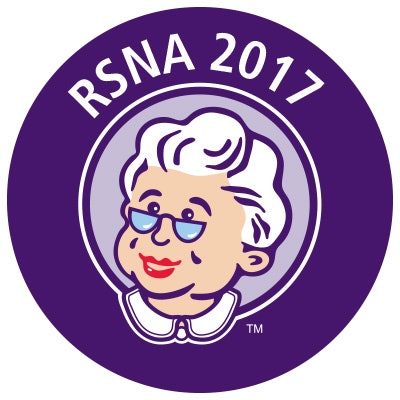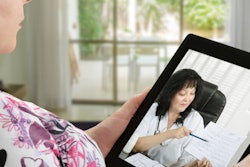
False positives on mammography do not deter women from undergoing other screening tests, such as cervical cancer or osteoporosis screening, according to research presented on Sunday at the RSNA 2017 meeting in Chicago.
Women with false-positive results on screening mammograms were no less likely to undergo a subsequent Pap smear and bone mass testing than those with true-negative screening results -- in fact, they had increased compliance with these other tests, lead author Dr. Stella Kang of NYU School of Medicine told AuntMinnie.com.
"False-positive screening mammography results are a source of controversy and have had influence on policy decisions and guidelines regarding screening mammography," Kang said. "But we actually found that female Medicare beneficiaries who underwent screening mammography showed increased subsequent uptake of cervical cancer and osteoporosis screening tests."
Encouraged or deterred?
In addition to false positives, potential harms of mammography may include unnecessary biopsies and patient distress. Given the current concerns about such potential harms, Kang and colleagues sought to explore whether false positives at screening mammography negatively affect women's compliance with other cancer and noncancer-related preventive services.
 Dr. Stella Kang.
Dr. Stella Kang."As patients decide whether or not to follow preventive guidelines, they weigh their personal perceptions of risk of breast cancer, prior experience with screening mammography, or personal experience with disease," Kang said. "Since there haven't been many studies on whether false-positive mammography results influence the use of other, nonbreast-cancer preventive services, we wanted to investigate whether mammography could potentially heighten women's awareness and willingness regarding adherence to other screening guidelines."
The researchers used Medicare data from 2010 to 2014 to cull two cohorts for the study: those beneficiaries who underwent screening mammography in 2012 (which the researchers referred to as "index screens") and those who did not. The final cohort included 555,705 women. Of these, 66.6% (370,080 patients) did not undergo screening mammography, 31.4% (173,168 patients) had a screening mammogram with negative results, and 2% (12,457 patients) had a screening mammogram with positive results.
 Dr. Linda Moy.
Dr. Linda Moy."Our study outcomes were three preventive services of Pap smear test, bone mass measurement, or influenza vaccine within two years following the index screening for screened patients, or during 2012 and 2013 for unscreened patients," study presenter Dr. Linda Moy, also of NYU, told session attendees. "These preventive services were identified as being relevant to women and potentially affected by the result of screening mammography."
After adjusting for patient demographics, comorbidity and geographic factors, and baseline preventive care, women who had the screening mammogram (with either positive or negative results) were more likely than nonscreened women to undergo a subsequent Pap smear or bone mass measurement test and receive the influenza vaccine. For positive screening results versus no screening, the odds ratio was 1.34 for having a Pap smear, 1.49 for bone mass measurement, and 1.32 for receiving the influenza vaccine. (Odds ratio values higher than 1 signify higher odds of a predicted outcome.) The odds ratios were similar for negative screening results versus no screening for all three preventive services, according to the team.
Kang and colleagues also found the following:
- For Pap smear and bone mass measurement, the top predictors of compliance were patient age and whether or not the patient had the respective test in the two years prior to the index screen.
- Younger age groups showed significantly greater odds ratios for undergoing a Pap smear and bone mass measurement.
- Having had a prior Pap smear or bone mass measurement within two years before the index screen also increased the odds of having a Pap smear or bone mass testing within two years after the index screen.
Good news
The research offers good news, according to Moy.
"The positive association we found in our research may be of consideration for further studies on the impact of patient counseling and experience with mammography on their comprehension and attitudes for other screening and preventive measures," she told session attendees. "Our study is also relevant to policy-level decisions regarding coverage for breast cancer screening as a key component of bundling recommendations for preventive tests."




















